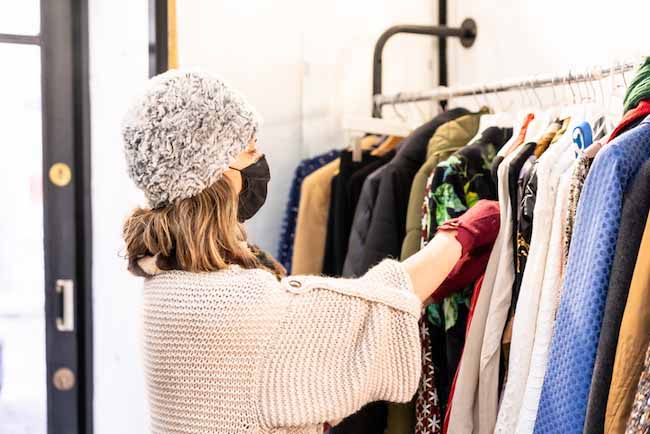Spotting new opportunities
Editor’s note: Alison Angus is head of lifestyles, and Gina Westbrook is a research director, with a focus on consumer trends, at market research firm Euromonitor International, London. This is an edited version of a post that originally appeared under the title, “What are the 10 global consumer trends in 2022?”
It’s no secret that consumer needs and preferences evolved in unprecedented ways over the past 18 months, and many companies have struggled to innovate fast enough. The only way to keep up is by watching these changes closely to spot new opportunities.
Our Top 10 Global Consumer Trends 2022 report (registration required) identifies the behaviors that will stick and offers recommendations to reshape your offerings and business models.
These are the trends that will guide business strategies this year:
Backup planners: Supply chain disruptions lead to next-best options.
Faced with challenges in securing their usual or desired products and services, backup planners are looking for ways to purchase similar items or finding creative solutions to obtain alternatives.
Supply chain shortages are forcing businesses to pivot and provide new solutions for customers to access products and services. Companies and distributors should use data to improve supply chain visibility, hone operations and rethink investments.
Climate changers: A low-carbon world.
Green activism and low-carbon lifestyles are here to stay. Consumers expect brands to step up and are acting through the products they purchase as concerns over the climate emergency escalate.
Seventy-eight percent of professionals think that climate change will impact consumer demand, changing behaviors, needs and preferences.
To win over climate changers, companies need to commit to reducing their carbon footprint and align their offerings with these expectations.
Digital seniors: From resistance to reliance.
The pandemic broadened older consumers’ minds to the benefits of the digital world. Now, familiar and comfortable with technology, digital seniors are empowered to make purchases and use services through this channel.
Businesses that successfully cater to this cohort should develop easy-to-use devices and simplify existing technologies. For seniors to adopt digital solutions, they must be frictionless and straightforward. If products or services are confusing to use, digital seniors will move to competitors.
Financial aficionados: Democratized money management.
People are gaining confidence in investing and becoming savvy savers to strengthen their financial security. Financial aficionados take control of their money and use services to track their transactions.
Retailers and brands should collaborate with financial service corporations to facilitate alternate forms of payment, such as cryptocurrencies or buy now, pay later, and build an integrated experience with shoppers.
The great life refresh: Passion and purpose drive action.
The pandemic triggered consumers to make drastic personal changes and reassess their values, lifestyles and goals. In fact, we saw a record number of employees leave their jobs last year.
Businesses have an opportunity to innovate goods, services and experiences that respond to this once-in-a-generation moment, coupled with marketing that acknowledges and embraces the upheaval.
The metaverse movement: Simulated, 3D digital ecosystems of the future.
Physical and virtual worlds collided last year. Now, the digital world is evolving beyond virtual hangouts to immersive 3D realities, and consumers are embracing these digital spaces to socialize with communities.
Brands like Gucci and Facebook (rebranded to Meta) have already started investing in the metaverse movement. In 2022, there will be opportunities for businesses to build equity in this new digital ecosystem and drive e-commerce and virtual product sales as access expands.
Pursuit of preloved: Secondhand, recommerce and peer-to-peer marketplaces.
 Thrifting is trending. Consumers are moving from an owning to an experiencing mind-set. Sustainability and individuality are removing the stigma associated with secondhand shopping and driving peer-to-peer commerce.
Thrifting is trending. Consumers are moving from an owning to an experiencing mind-set. Sustainability and individuality are removing the stigma associated with secondhand shopping and driving peer-to-peer commerce.
Thirty-three percent of consumers buy used or secondhand items at least every few months.
Businesses need to do more with less. Investing in circular economy initiatives, such as recycling, rental or resale programs, will drive value while positively impacting the environment.
Rural urbanites: Best of both worlds.
Last year, consumers were searching for an outdoor oasis, relocating to rural areas temporarily for more spacious housing and greener scenery. Now, this move is becoming permanent. But not all consumers are ready to give up urban life. City dwellers also want these benefits brought into their neighborhoods.
Incorporating more sustainable initiatives, such as indoor farming and rooftop gardens, into metropolitan areas will resonate with rural urbanites. Businesses that also strengthen e-commerce distribution and expand sustainable product lines will emerge as winners.
Self-love seekers: Individuality and authenticity drive happiness.
Acceptance, self-care and inclusion are at the forefront of consumer lifestyles. Self-love seekers prioritize their happiness, feeling comfortable in their own skin and indulging in goods and services that elevate their sense of self.
Businesses need to support consumers on their journey and understand their priorities to inform innovation. Offerings that help consumers feel fulfilled, positive and self-assured will improve brand perception.
The socialization paradox: A divided return to pre-pandemic life.
Consumers are approaching a return to pre-pandemic life in different ways based on their comfort levels. Certain consumes are eager, while others are hesitant, to resume their normal activities, creating the socialization paradox.
Seventy-six percent of consumers took health and safety precautions when leaving their homes in 2021.
Companies need to be considerate of fluctuating comfort levels. While consumers are shopping online for convenience or safety, they also crave meaningful interpersonal connections. Using a blended approach to cater to consumers’ new norm is crucial.
The changing business landscape
These 10 consumer trends will change the business landscape once again, but by keeping these newfound changes at the forefront of your strategy, you’ll be best positioned to succeed in 2022.
Download our full report, Top 10 Global Consumer Trends 2022 (registration required), for in-depth trend descriptions, case studies and strategic recommendations.
